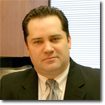
 By David Heitner
By David Heitner
April 8, 2010
You’ve heard the sneezing around the office, maybe a few coughs and folks rubbing their red eyes at meetings. You’ve even noticed a spike in the number of people calling in sick. You might have shrugged it off as another cold and flu season or even allergies getting the best of your employees. But have you peaked inside that bin you see the office cleaning crew rolling down the hallways?
Some of the most commonly used office cleaning supplies contain volatile organic compounds (VOCs), and according to the U.S. Environmental Protection Agency (EPA), these substances can escape to the atmosphere and react to form atmospheric pollutants like smog. These gases are proven irritants of the eyes, nose, throat, lungs and causes asthma attacks. Many companies, large and small, are looking for “green cleaning” solutions, but what does that really mean? To many it means using the least toxic products, equipment and procedures available. It’s also making sure that the rag used on urinals and a toilet isn’t the same one used on your desk!
You can start a green cleaning movement in your office by making sure your cleaning company is using certified green cleaning products, microfiber mops, Hepa filter vacuums and that their employees have green cleaning training. What’s the benefit to your bottom line? More than you think.
Green cleaning can improve indoor air quality, provide healthy benefits and save your business money. The following statistics are the results of research studies comparing green cleaning techniques to other common industrial cleaning practices. These numbers show what kind of effect green cleaning can have:
-¢ Airborne dust inside the building decreased by 52 percent*
-¢ Volatile organic chemical (VOC) concentrations decreased by 49 percent*
-¢ Bacteria decreased by 40 percent*
-¢ Fungi colony-forming units deceased by 61*
-¢ Illness reduced by 24 percent**
-¢ Doctor visits decreased by 34 percent**
-¢ Antibiotic treatment decreased by 24 percent**
-¢ Days absent decreased by 46 percent
One size does not fit all. No matter what you hear, each office is different and requires an assessment or site audit. An cleaning company account executive will look for some common problem areas that relate to your type of industry and then provide the appropriate solutions to make sure the problems are being eliminated. These solutions can assist in helping your organization design a program to have your facility become LEED certified, which does require much more than just using green chemicals and equipment.
Green cleaning doesn’t mean more expensive cleaning. In fact, your office cleaning company should be able to provide this service without any extra charge, and- if they don’t- ask why. Green products are more common and priced more competitively than they were a decade or even five years ago. If you are not receiving professional, customized options and personalized plans for your office — demand it.
David Heitner has been serving commercial clients with innovative Green cleaning services since founding Heits Building Services in 2003 and is one of the industry leaders promoting and implementing the green cleaning movement. Heits Building Services is franchising throughout the country. David can be reached at [email protected]
* Indoor Environment Characterization of a Non-Problem Building: Assessment of Cleaning Effectiveness, US Environmental Protection Agency, March 1994. (conducted at the Frank Porter Graham Child Development Center, Chapel Hill, NC)
**Economic Impact of an Infection Control Education Program in a Specialized Preschool Setting, PEDIATRICS Vol. 108 No. 6 December 2001, pp. e102







